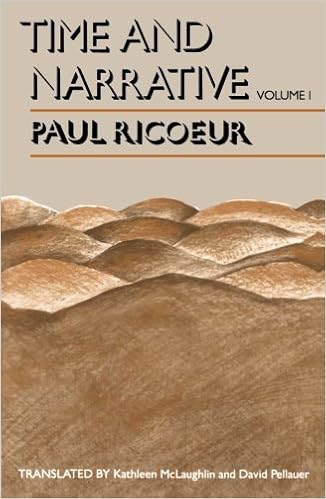
By Hubert L. Dreyfus, Mark A. Wrathall
A significant other to Phenomenology and Existentialism is an entire consultant to 2 of the dominant pursuits of philosophy within the 20th century.
- Written by way of a crew of prime students, together with Dagfinn Føllesdal, J. N. Mohanty, Robert Solomon, Jean-Luc Marion
- Highlights the world of overlap among the 2 movements
- Features longer essays discussing all of the major colleges of proposal, shorter essays introducing admired subject matters, and problem-oriented chapters
- Organised topically, round ideas akin to temporality, intentionality, dying and nihilism
- Features essays on strange topics, similar to medication, the sentiments, synthetic intelligence, and environmental philosophy
Read Online or Download A Companion to Phenomenology and Existentialism PDF
Similar Phenomenology books
Time and Narrative, Volume 1 (Time & Narrative)
Time and Narrative builds on Paul Ricoeur's previous research, within the Rule of Metaphor, of semantic innovation on the point of the sentence. Ricoeur right here examines the production of that means on the textual point, with narrative instead of metaphor because the ruling predicament. Ricoeur unearths a "healthy circle" among time and narrative: time is humanized to the level that it portrays temporal adventure.
Phenomenology, including Marxism, pragmatism, and analytic philosophy, ruled philosophy within the 20th century—and Edmund Husserl is mostly idea to were the 1st to boost the concept that. His perspectives motivated numerous vital later thinkers, akin to Heidegger and Merleau-Ponty, who finally grew to become phenomenology clear of questions of data.
The philosophical paintings of Jean-Luc Marion has opened new methods of talking approximately spiritual convictions and reports. during this exploration of Marion’s philosophy and theology, Christina M. Gschwandtner provides a finished and demanding research of the guidelines of saturated phenomena and the phenomenology of givenness.
Additional resources for A Companion to Phenomenology and Existentialism
In Husserl 1964 he translates the 2 types “S has the half P” and “S has the standard m” as identical with regards to the constitution in their structure; see Husserl 1964: 262. In principles I (1950) Husserl will regard this chance of constructing an purpose specific as attribute of horizon-intentionality. See Husserl 1950: 1, fifty seven, seventy one ff. , 212 f. See Husserl 1950: 239. For specific dialogue of the functionality of sensuality in categorial instinct see Lohmar 2002: 125–45. however, those possibilities for gaining wisdom don't disappear with no hint. within the genetic phenomenology one of many well-known subject matters is the way this “trace” (of wisdom that's skilled yet now not conceptualized) is stored or saved within the human topic in several kinds of prepredicative adventure. See the 1st component of Husserl 1964 and Lohmar 1998: Ch. III, 6–8. Husserl himself wrote as soon as – within the problematical Ch. 7 of the sixth LI – concerning the probability of a practical dependence of the facts of the categorial act from the facts of the founding acts (see Husserl 1984: 704). See Lohmar 1990: 179–97. Husserl writes: “Zugleich ‘deckt’ sich aber das fortwirkende Gesamtwahrnehmen gemäß jener implizierten Partialintention mit dem Sonderwahrnehmen” (Husserl 1984: 682). it can be crucial that this “synthesis of twist of fate” can ensue additionally among symbolic (and therefore “empty”) intentions, that's of the most important value for the root of mathematical wisdom; see additionally Husserl 1985: 282. we'd imagine that syntheses of accident are a content material of internal notion. At a time Husserl himself suggestion that this kind of resolution might be promising. In Ch. 7 of the sixth LI (1st edn. ), the “Studie über kategoriale Repräsentation,” Husserl proposes the thesis that categorial intuitions may be fulfilled through the apprehension of so-called “contents of mirrored image. ” subsequently, the content material apprehended is similar content material which represents the particular functionality of the categorial act in internal belief. See Husserl 1984: 708, Lohmar 1990. E. Tugendhat takes up this deceptive view of Husserl; see Tugendhat 1979: 118– 27. in a while Husserl criticizes this test of the 1st version of LI as faulty; see Husserl 1984: 535. the concept that of accident has a problematical double feel in Husserl. within the LI Husserl makes use of the idea that of accident frequently to call the accident of fulfilled intentions with empty intentions which fulfills the latter. yet this can be a trivial inspiration of achievement for it doesn't resolution the query how fulfilled intentions turn into fulfilled in any respect. the opposite context of utilizing the concept that of accident is in examining categorial instinct as fulfilled through synthesis of accident among the partial intentions of the founding acts; this non-trivial use of the concept that makes transparent how the specific intentions turn into fulfilled. See Bernet, R. , Kern, I. , Marbach, E. 1989: 74–84; Mohanty 1959: 222–30; Tugendhat 1979: 137–68; Hopkins 1997: 151–78. The designation “Wesensschau” for the eidetic instinct appears to be like a unsuitable selection in terminology since it indicates a nearness to platonic pondering which isn't meant by way of Husserl.



